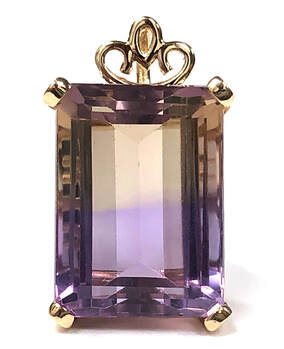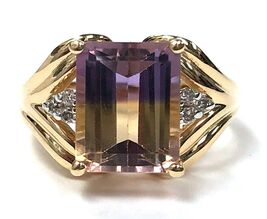aMETRINE
|
Variety: Ametrine
Species: Quartz Mohs Hardness: 7 out of 10 Color: Bicolor combination of purple and orange hues RI: 1.544 to 1.553 (very constant) Birefringence: 0.009 SR/DR/AGG: DR Clarity Type: Type II Optic Character: Uniaxial positive. Might show a bull's eye or Airy's spiral optic figure and Brazil law twinning under crossed polarizing filters. Pleochroism: Very weak. Different tones of yellow and orange, different tones of purple and reddish purple Spectrum: Not diagnostic Fluorescence: Generally inert. SG: 2.66 (+0.03 / -0.02) Routine Treatments: None Additional Enhancements: Heating, iraddiation |




